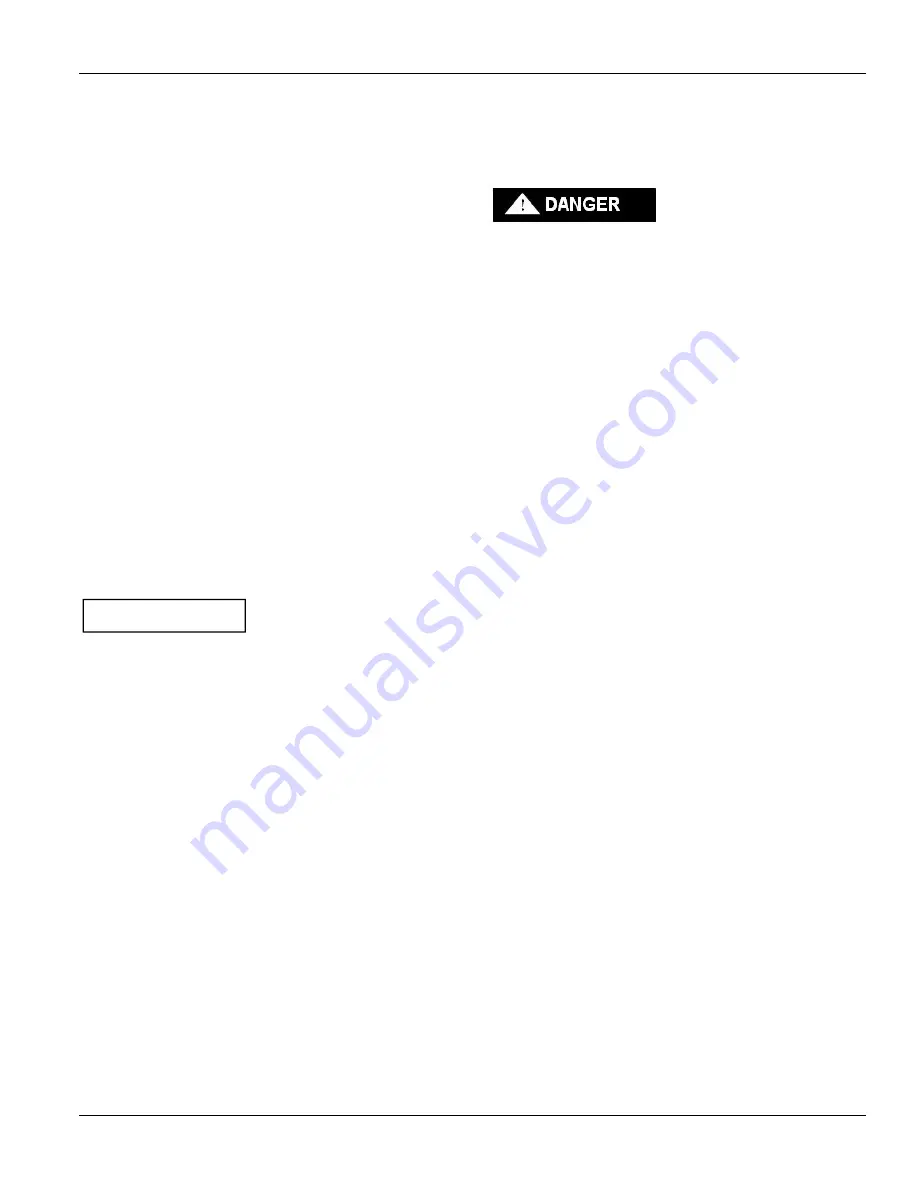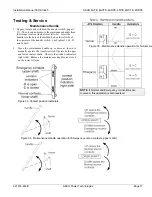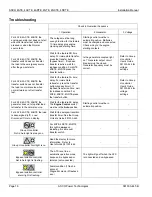
Installation Manual 381333-445
ASCO 4ATE, 4ACTE, 4ADTE, 4NTE, 4NCTE, 4NDTE
381333-445 B
ASCO Power Technologies
Page 3
Installation
These transfer switches are factory wired and tested.
Installation requires mounting, connecting power cables, and
connecting engine start and auxiliary control circuits (if
required.).
Supporting Foundation
The supporting foundation for the enclosure must be level and
straight. Refer to the applicable enclosure outline drawing
included with the transfer switch for all mounting details
including door opening space.
If bottom cable entry is used, the foundation must be prepared
so that the conduit stubs are located correctly. Refer to the
enclosure outline drawing for specified area and location.
Provide cable bending space and 1 inch minimum clearance to
live metal parts. When a concrete floor is poured, use
interlocking conduit spacer caps or a wood or metal template
to maintain proper conduit alignment.
Mounting
Refer to the outline and mounting diagram and mount the
transfer switch according to details and instructions shown on
the diagram. Mount it vertically to a rigid supporting
structure. Level all mounting points by using flat washers
behind the holes to avoid distortion of the transfer switch.
Protect the transfer switch from construction grit
and metal chips to prevent malfunction or
shortened life of the transfer switch.
Line Connections
Refer to the wiring diagram provided with the transfer switch.
All wiring must be made in accordance with the National
Electrical Code and local codes.
De-energize the cables before making any line or
auxiliary circuit connections. Be sure that the
Normal and Emergency line connections are in
proper phase rotation. Place the engine generator
starting control in the OFF position. Make sure
engine generator is not in operation.
Testing Power Cables
Do not connect the power cables to the transfer switch until
they are tested. Installing power cables in conduit, cable
troughs, and ceiling-suspended hangers often requires
considerable force. The pulling of cables can damage
insulation and stretch or break the conductor’s strands. For
this reason, after the cables are pulled into position, and before
they are connected, they should be tested to verify that they
are not defective or have been damaged during installation.
Connecting Power Cables
After the power cables have been tested, connect them to the
appropriate terminal lugs on the transfer switch as shown on
the wiring diagram provided with the transfer switch. Make
sure that the lugs provided are suitable for use with the cables
being installed. Standard terminal lugs are solderless screw
type and will accept the wire sizes listed on the drawings
provided with the transfer switch. Be careful when stripping
insulation from the cables; avoid nicking or ringing the
conductor. Remove surface oxides from cables by cleaning
with a wire brush. When aluminum cable is used, apply joint
compound to cables. Tighten cable lugs to the torque
specified on rating label.
Auxiliary Circuits
Connect auxiliary circuit wires to appropriate terminals on
transfer switch terminal block TB as shown on the wiring
diagram provided with this switch.
NOTICE


















